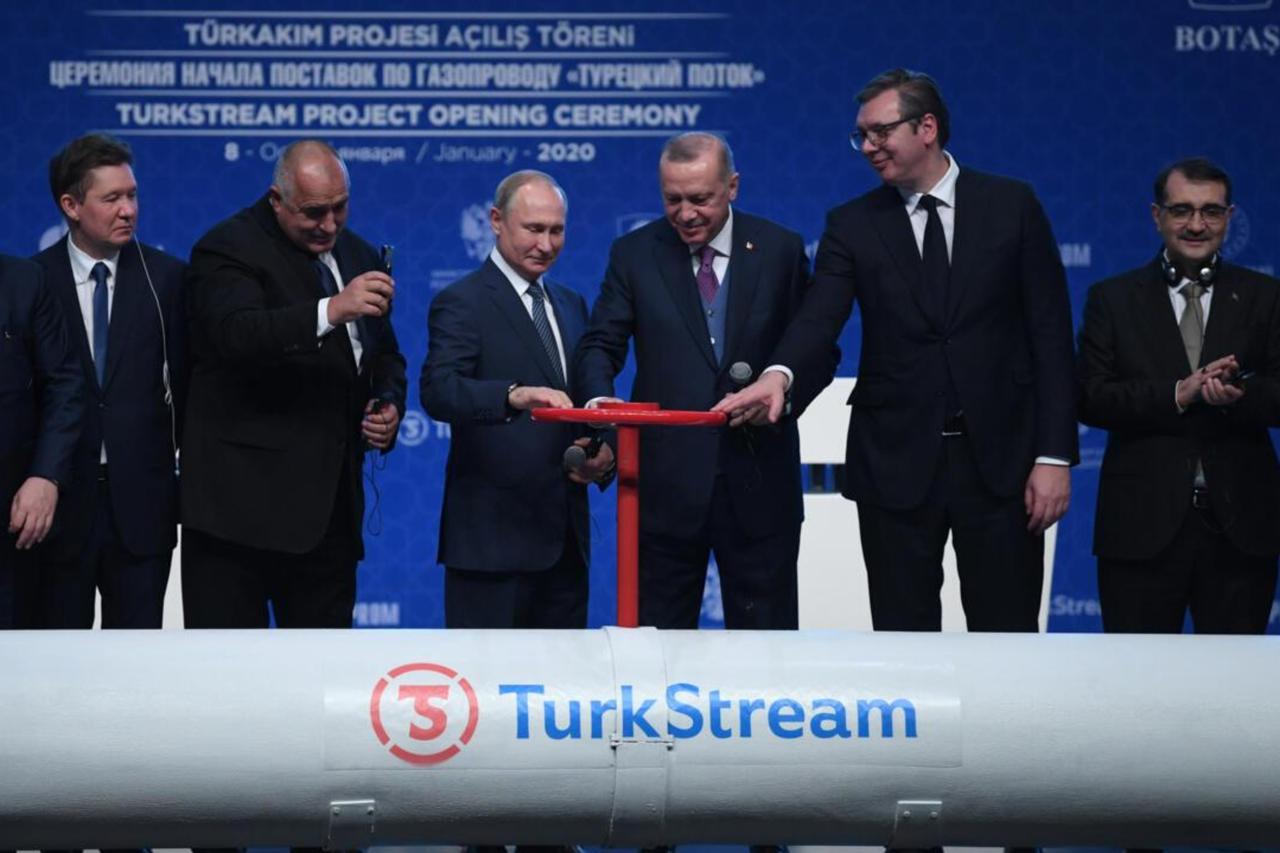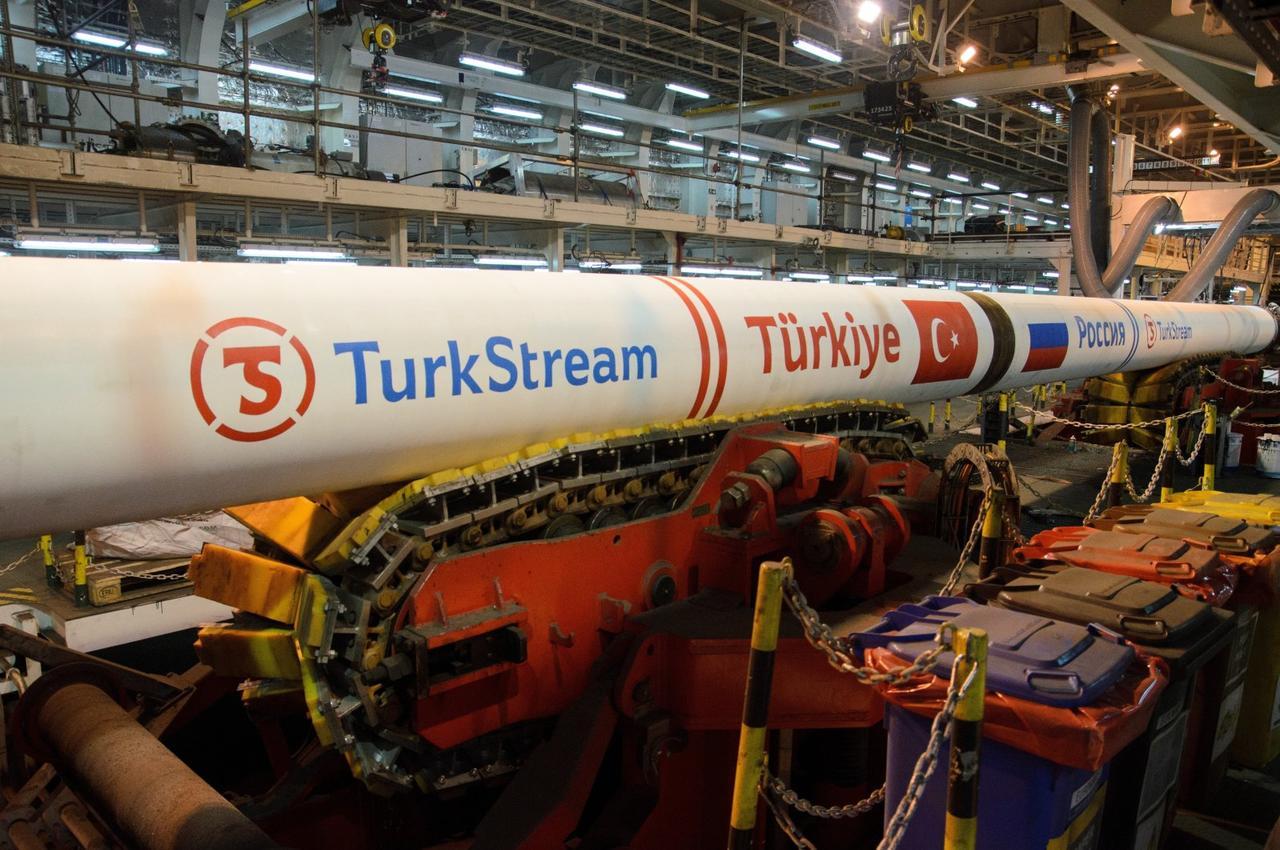
The TurkStream Natural Gas Pipeline project, signed between Russia and Türkiye on Oct. 10, 2016, has completed nine years as a critical element in regional natural gas supply security and Europe's diversification efforts.
The project's marine section was completed in 2018 and became operational in 2020, reshaping regional natural gas flows and playing a critical role in Türkiye's energy supply security and Europe's supply diversification.
TurkStream consists of two lines running from Anapa on Russia's Black Sea coast to Türkiye's Kiyikoy shore, with a total capacity of 31.5 billion cubic meters. One line supplies gas to Türkiye's domestic market while the other delivers gas to Europe.
The pipeline's official opening took place Jan. 8, 2020, with a ceremony attended by President Recep Tayyip Erdogan, Russian President Vladimir Putin, Serbian President Aleksandar Vucic and Bulgarian Prime Minister Boyko Borisov.
Russian gas reached Türkiye and Europe directly via the Black Sea for the first time.

Dr. Osman Zeki Gokce, assistant professor in the Department of Political Science and International Relations at Bogazici University, speaking to state-run Anadolu Agency (AA) on Thursday, said the pipeline both diversified Türkiye's supply routes and reduced Russia's reliance on countries such as Ukraine and Poland for gas transport to Europe.
Gokce said the pipeline's importance became clearer during the Russia-Ukraine War.
"Türkiye and neighboring countries benefiting from TurkStream were able to protect their energy security without experiencing supply problems," Gokce said.
Gokce noted that TurkStream is the only of the four pipelines carrying Russian gas to Europe that remains operational.
"According to data published by research institution Bruegel in Europe, as of week 39 of 2025, while there was no gas flow in the other three routes, 372 million cubic meters of gas flowed to EU countries from the TurkStream pipeline," Gokce said.
"Total flow since the beginning of the year has exceeded 13 billion cubic meters," he noted. Despite European policies to reduce dependence on Russian gas, regional dynamics work differently, Gokce said. "Balkan and Central European countries must protect their energy security," he added.
"Russian gas can stand out as a more economical option compared to liquefied natural gas coming from the US or other suppliers. In short, I think Russian gas will continue to find a market in Europe via TurkStream despite all distancing policies," he added.

Gokce said TurkStream provides economic benefits to Türkiye, offering protection against price fluctuations in spot markets and supply risks.
"Through this pipeline, Türkiye both strengthens its own supply security and earns transit revenue from gas transported to Europe," Gokce said.
Long-term natural gas agreements provide price advantages, Gokce said.
"For Türkiye, which aims to become an energy hub, being a determining actor in TurkStream is critical," Gokce said, adding, "Likewise, some European countries also benefit from this pipeline in terms of price stability and supply continuity."
Tatiana Mitrova, a research fellow at the Center on Global Energy Policy at Columbia University, said Türkiye's position as a key transit and trade hub between Russian supply via TurkStream and Southeast European demand has strengthened.
"Since its inception, TurkStream has played an important role in regional gas supply," Mitrova said.
"By providing an alternative route to Ukraine, it ensured regular deliveries to Türkiye, Bulgaria, Serbia and Hungary," she concluded.